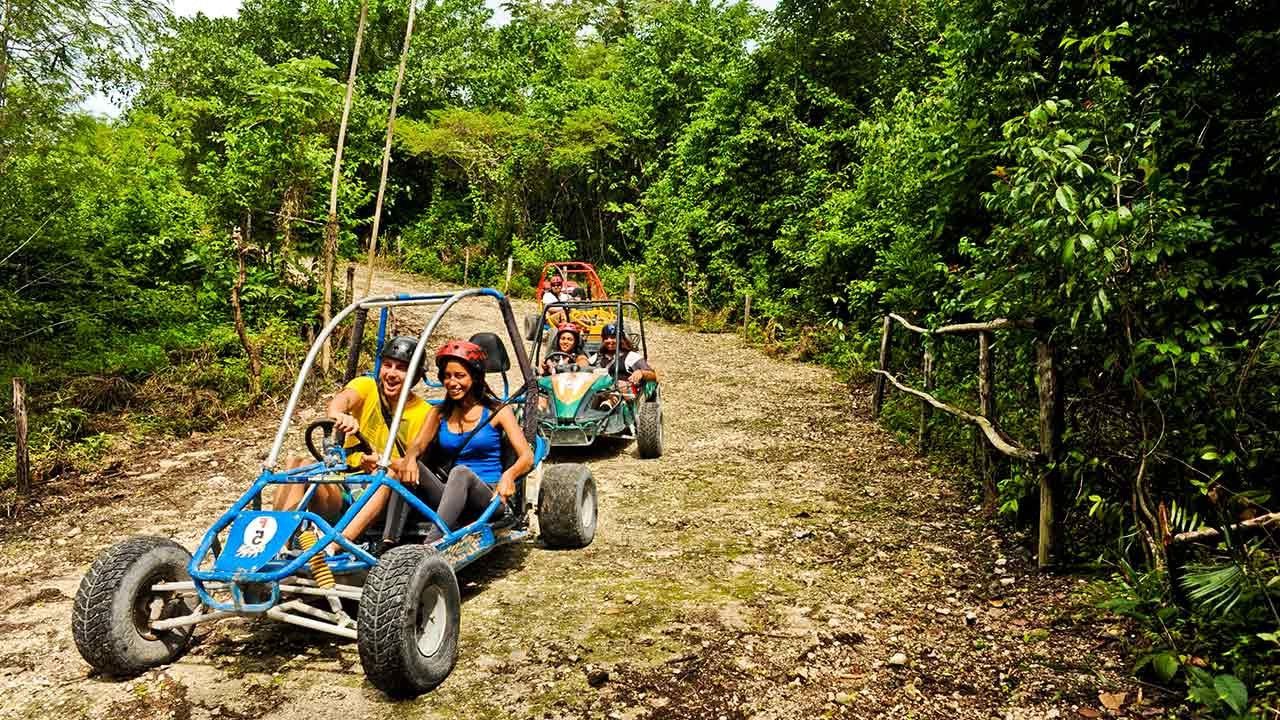Dune buggies, often called sand buggies rails or off-road vehicles, are open-air, lightweight vehicles with big wheels and tires meant for sand-covered terrain. Typically, they are built on a modified chassis. Their appeal lies in their versatility and capability to conquer various off-road environments. Over recent years, dune buggies have experienced a surge in popularity among adventure enthusiasts and outdoor enthusiasts seeking adrenaline-fueled experiences. Are dune buggies street legal? However, driving dune buggy roads requires careful consideration of legal regulations to ensure compliance with safety standards and traffic laws.
Are Dune Buggies Street Legal?
“Are dune buggies street legal?” is a common question among enthusiasts and potential buyers. The answer varies depending on location and local regulations. While dune buggies are designed for off-road adventures, driving them on public roads often requires adherence to specific safety equipment and modifications. These may include seat belts, headlights, turn signals, and rearview mirrors, among others. Additionally, registration and inspection processes may be necessary to legalize dune buggies for street use. Understanding the legal requirements and ensuring compliance is essential for enthusiasts looking to enjoy their dune buggies responsibly and safely on public roads.
History of Dune Buggies
The origins of dune buggies can be traced back to the 1960s, emerging from the vibrant beach culture of California. Crafted from a stripped-down Volkswagen Beetle chassis, these custom-built vehicles quickly gained popularity among thrill-seekers seeking adventure in the sand. Over time, dune buggies evolved significantly, both in design and performance. Manufacturers began producing purpose-built models equipped with powerful engines and specialized suspension systems to tackle challenging terrains. Beyond their practical utility, dune buggies hold a significant cultural significance, symbolizing freedom, exploration, and the thrill of off-road adventure. Their capacity to offer thrilling outdoor experiences is what makes them so appealing.
What makes a street legal?

Street-legal dune buggy vehicles meet the requirements for operating on public roads safely and legally. To be considered dune buggy street legal, vehicles must comply with regulations set forth by local authorities, which typically include having proper safety equipment, functioning lights, signals, brakes, and emissions controls. Additionally, vehicles must pass inspection and registration processes to ensure they meet specific standards for roadworthiness.
However, factors such as modifications, vehicle classification, and state-specific regulations can impact the street legality of dune buggies. Modifications that alter the vehicle’s safety features or emissions may render it non-compliant while varying state laws can dictate where and how dune buggies can be legally operated on public roads.
Regulations for Dune Buggies
State-specific regulations for dune buggies vary across different states, impacting where and how these vehicles can be legally operated. These regulations encompass factors such as vehicle classification, equipment requirements, and permitted driving locations. Safety equipment and modifications, including features like seat belts, roll cages, and lighting fixtures, are crucial for ensuring dune buggy street legality.
These enhancements not only fulfill legal mandates but also enhance occupant safety on public roads. Inspection and registration processes are essential steps to legalize dune buggies for street use. Inspection involves thorough checks of safety components and structural integrity, while registration entails submitting documentation and fees to obtain legal recognition. Understanding and adhering to these processes is vital for dune buggy enthusiasts seeking to enjoy their vehicles within legal boundaries.
Challenges to Street Legality

The lack of uniform regulations across states poses challenges for dune buggy enthusiasts, as laws regarding their operation can vary significantly from one location to another. Environmental concerns and emissions regulations are increasingly relevant, with many states imposing strict standards to reduce pollution and minimize ecological impact.
Safety considerations for dune buggies on public roads are paramount, necessitating adherence to specific equipment requirements and driving practices to enhance both driver and passenger safety. Understanding these diverse regulations, environmental factors, and safety protocols is essential for navigating the complexities of dune buggy ownership and operation responsibly.
Legal Alternatives for Off-Road Vehicles
Off-road parks and designated trails offer dune buggy enthusiasts designated areas where they can legally enjoy their vehicles in off-road settings. These parks provide a controlled environment with various terrains and obstacles for enthusiasts to explore safely. Additionally, private property usage for dune buggies provides another avenue for off-road enthusiasts to enjoy their vehicles, often with the permission of landowners.
Rental services and guided tours cater to individuals who may not own their dune buggies but still want to experience off-road adventures. These services offer access to vehicles and expert guidance, allowing enthusiasts to enjoy off-road experiences without the commitment of ownership.
Enforcement of Street Legal Requirements
Law enforcement is essential to maintaining dune buggies’ compliance with rules. Officers enforce laws pertaining to vehicle equipment, usage, and safety requirements. Penalties for driving non-street legal vehicles on public roads can vary but often include fines, vehicle impoundment, and even license suspension.
Education and awareness campaigns are crucial for dune buggy owners to understand and follow regulations. These campaigns provide information on safety practices, legal requirements, and the importance of responsible off-road driving. By working together with law enforcement and participating in educational initiatives, dune buggy enthusiasts can contribute to safer roads and trails for everyone.
Safety Considerations for Dune Buggy Owners
Safety considerations are paramount for dune buggy owners to enjoy their vehicles responsibly. Proper safety gear, including helmets, seat belts, and protective clothing, is essential to mitigate the risk of injury in the event of accidents. Training and experience are crucial prerequisites for driving off-road vehicles safely, as navigating challenging terrain requires specific skills and knowledge. Precautions such as inspecting the vehicle before each ride, adhering to speed limits, and avoiding risky maneuvers can help prevent accidents and injuries while off-roading. By prioritizing safety and taking necessary precautions, dune buggy owners can minimize risks and maximize their enjoyment of off-road adventures.
Economic Impact of Dune Buggy Regulations

Dune buggy regulations have a significant economic impact across various sectors. Manufacturers and retailers of dune buggies may be affected by stringent regulations, as compliance costs and restrictions on vehicle modifications can impact production and sales. Conversely, regions with lenient regulations may experience economic growth due to increased tourism and recreational spending associated with dune buggy activities. Tourists and enthusiasts often contribute to local economies through spending on accommodations, dining, and entertainment. Moreover, businesses offering dune buggy rentals, tours, and related services can thrive in areas where regulations are favorable, stimulating job creation and revenue generation.
Conclusion
In conclusion, understanding the intricacies of street legality for dune buggies is crucial for enthusiasts to navigate regulatory frameworks effectively. We’ve highlighted the importance of adhering to safety equipment requirements, modifications, inspection processes, and registration procedures. Looking ahead, the future of dune buggy regulations may evolve to balance safety concerns with the enjoyment of off-road recreation. However, regardless of regulatory changes, responsible and safe off-roading practices should always be prioritized. By staying informed, respecting regulations, and prioritizing safety, dune buggy enthusiasts can continue to enjoy their vehicles while minimizing risks to themselves and others on the road and trails.
FAQ
What is the most Expensive Dune Buggy?
Although its appearance resembles that of a remote-controlled car, the Sidewinder dune buggy is a remarkable engineering achievement. Despite its purpose of navigating sandy dunes and beaches, the Sidewinder boasts an impressive top speed of 93 mph (150 kph). However, its price tag is quite staggering, coming in at £157,000 (€199,000 or $246,289).
How Fast is a 150-cc Buggy?
The buggy can accommodate two adults and reach speeds of up to 35 mph, with the option to limit speed to 10 mph if necessary.
Is a Buggy a Car?
A compact vehicle, typically without a roof: Despite playing golf, he had to traverse the course using a buggy.
Are Dune Buggies good for off-road?
Dune buggies are equipped with a roll cage for safety and are tailored for off-road adventures in sandy landscapes such as deserts and dunes. These vehicles typically utilize rear-wheel drive and are propelled by a rear-mounted engine, ensuring optimal traction on sand.
What license is required for the buggy?
All users must have at least a provisional driving license

